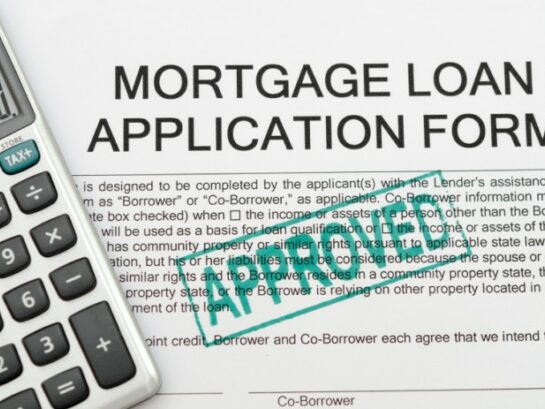MORTGAGE BASICS
Amortization. Fixed rate. Variable rate. High-ratio. Principal. If you’re mystified by mortgage-speak, you’re not alone. Here’s a crash course in mortgage basics to help you make smart decisions about one of the biggest investments you’ll ever make.
CHOOSE A TERM THAT WORKS FOR YOU.
A term is a period of time (from 6 months to 10+ years) during which you pay your mortgage at a specified interest rate. To figure out what term is right for you, decide how comfortable you are with the volatility of the market and how important a stable mortgage payment is to your budget.
LONG TERM:
Right now, interest rates are low. If you’re afraid they’ll go up and you want to lock in at a low rate, or you want to know exactly how much you’ll be paying every month, go for a longer term like 5, 7 or 10 years.
SHORT TERM:
If interest rates look like they’re falling, this may be a better bet. If you’re comfortable with payments that may fluctuate somewhat, your best bet is a shorter-term mortgage (i.e. a 6-month variable rate mortgage) that lets you take advantage of low rates, but also has the flexibility of allowing you to lock in and convert to a longer-term mortgage whenever you want.
DECIDE ON AN AMORTIZATION PERIOD.
The amortization is the number of years (15, 20, 25) it would take to pay back the loan based on a fixed payment amount. The longer the amortization, the more interest you’ll pay. You can shorten your amortization by increasing your payments, paying lump sums towards the principal, or renewing your loan at a lower rate.
DECIDE ON A FIXED OR VARIABLE RATE.
A fixed-rate mortgage means you pay a set amount every month for the term of your loan. Whether posted interest rates rise or fall, your payments won’t change.
With a variable-rate mortgage, your interest rate fluctuates with your lender’s prime lending rate. It offers more flexibility, but also more risk. Typically, you pay a set amount every month, but when rates fall, more cash goes to principal, which reduces the interest you’ll have to pay in the long term. If rates go up, however, your set payment may not be enough to cover interest and principal, so you could end up having to pay more.
CHOOSE A CLOSED VS. OPEN MORTGAGE.
In an open mortgage, you can repay your loan any time without penalty. So if you sell another property or come into some extra money, you can pay down your principal whenever you want. Interest rates for open mortgages tend to be higher than for closed, and terms are typically shorter.
A closed mortgage is less flexible. If you decide to pay off a big chunk of your principal, you could incur a penalty. However, even closed mortgages have pretty generous prepayment options (usually up to 20% of the principal per year).
DECIDE HOW OFTEN YOU’LL MAKE PAYMENTS.
You can pay monthly, bi-weekly or weekly. Here’s the difference: with monthly payments, you make 12 a year. With bi-weekly payments, it’s 26. That’s the equivalent of 13 payments a year instead of 12. You probably won’t notice much of a difference in your cash flow, but you’ll pay off your mortgage faster, and save yourself thousands in interest.

WILL YOU GET A HIGH-RATIO OR CONVENTIONAL MORTGAGE?
That depends on the size of your down payment. A conventional mortgage is a loan that covers up to 75% of the purchase price, and doesn’t need to be insured against default. A high-ratio mortgage is anything over 75%, and must be insured by the Canada Mortgage and Housing Corporation (CMHC) or GE Capital. You can add your insurance premium (a percentage of your loan amount) to your mortgage or pay it on closing.
GET PRE-APPROVED.
Find out how much you’re eligible to borrow before you start looking. You’ll know exactly how much you can afford, and you’ll be guaranteed the interest rate that’s available at the time of your pre-approval for 60-120 days. If rates go up, you won’t have to worry about paying more, and if they go down, you get the lower rate. It’s win-win, free and there’s never an obligation to go with that lender.
SHOP SMART.
Now that you’re armed with some mortgage knowledge, you’ll be able to choose a loan that best meets your needs. If you need more info, most lenders have helpful information on their websites, or you can always ask your REALTOR® for help understanding the ins and outs of mortgages.
HAPPY MORTGAGE HUNTING!
Callout: “If you’re mystified by mortgage-speak, you’re not alone.”
Royal LePage West Kelowna
11-2475 Dobbin Rd
West Kelowna, BC V4T 2E9
250-864-4537

The trade marks displayed on this site, including CREA®, MLS®, Multiple Listing Service®, and the associated logos and design marks are owned by the Canadian Real Estate Association. REALTOR® is a trade mark of REALTOR® Canada Inc., a corporation owned by Canadian Real Estate Association and the National Association of REALTORS®. Other trade marks may be owned by real estate boards and other third parties. Nothing contained on this site gives any user the right or license to use any trade mark displayed on this site without the express permission of the owner.
powered by webkits

